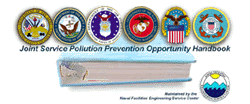 |
|
||||||||||||||
| Overview: | A trommel is a rotary cylindrical screen that is typically inclined at a downward angle which, combined with the tumbling action of the trommel, separates materials of different density. Trommel screens are used to separate commingled recyclables, municipal solid waste components, or to screen finished compost from windrow and aerated static pile systems.
Trommel screens are used by material recovery facilities to separate compostable paper from glass and other contaminants in previously shredded municipal solid waste. Smaller trommels have been used to separate labels and caps from crushed glass. Some trommels are designed to let paper pass through the screen while diverting heavier materials to re-crushing or a landfill. Other applications require multi-stage trommel screens which have meshes or plates of different aperture sizes. These screens may be used for the separation of commingled wastes with components of various sizes. In composting applications, trommel screens are used to enhance the market value of finished compost by separating large particles and non-degraded bulking agents such as wood chips from the organic fines. The fines are used or sold as a soil amendment and the bulking agent can be re-used. Trommel screens are used when a high quality end product is desired. The factors that influence the separation efficiency of trommel screens are:
The types of trommel screens available range from electrically or hydraulically stationary units with or without conveyors and hoppers to electrically or hydraulically self-contained, portable or mobile units with conveyors, cleaning brushes, and variable speed trommel drums.
|
||||||||||||||||||||||||
| Compliance Benefit: | Waste separation using trommel screens can help facilities decrease the amount of solid waste going to landfills and therefore, helps facilities meet the requirements under Executive Order 13101 requiring executive agencies (e.g., DOD) to incorporate waste prevention and recycling in their daily operations. Use of trommel screens may increase the use of electricity at the facility. Under EO 12902 facilities are required to reduce energy consumption.
The compliance benefits listed here are only meant to be used as a general guideline and are not meant to be strictly interpreted. Actual compliance benefits will vary depending on the factors involved e.g., the amount of workload involved.
|
||||||||||||||||||||||||
| Materials Compatibility: | N/A
|
||||||||||||||||||||||||
| Safety and Health: | Safety issues for using trommel screens deal with the operation of power equipment. Operators should be specifically trained to use the trommel screen. Machinery should not be used if workers are on medication. Proper personal protective equipment (PPE) including gloves, eye protection, and hearing protection should be used if needed.
Consult the base safety office on proper protective gear and training prior to using mechanized equipment.
|
||||||||||||||||||||||||
| Benefits: |
|
||||||||||||||||||||||||
| Disadvantages: | N/A
|
||||||||||||||||||||||||
| Economic Analysis: | Trommel screens which process material in the range of 50 to 100 cubic yards/hour range in cost from $50,000 to $180,000. The ecomomic analysis is for an aerated static pile compost operation. The capital costs include compost pads with air lines, blowers, a tub grinder, compost mixer, trommel screen, front end loaders, and offices.
Assumptions:
Annual Operating Cost Comparison for Diversion and Disposal Using a Composting Facility
Economic Analysis Summary
Capital Cost for Diversion Equipment/Process: $3,000,000 Payback Period for Investment in Equipment/Process: < 6 years Click Here to view an Active S
|
||||||||||||||||||||||||
| Approving Authority: | Approval is controlled locally and should be implemented only after engineering approval has been granted. Major claimant approval is not required.
|